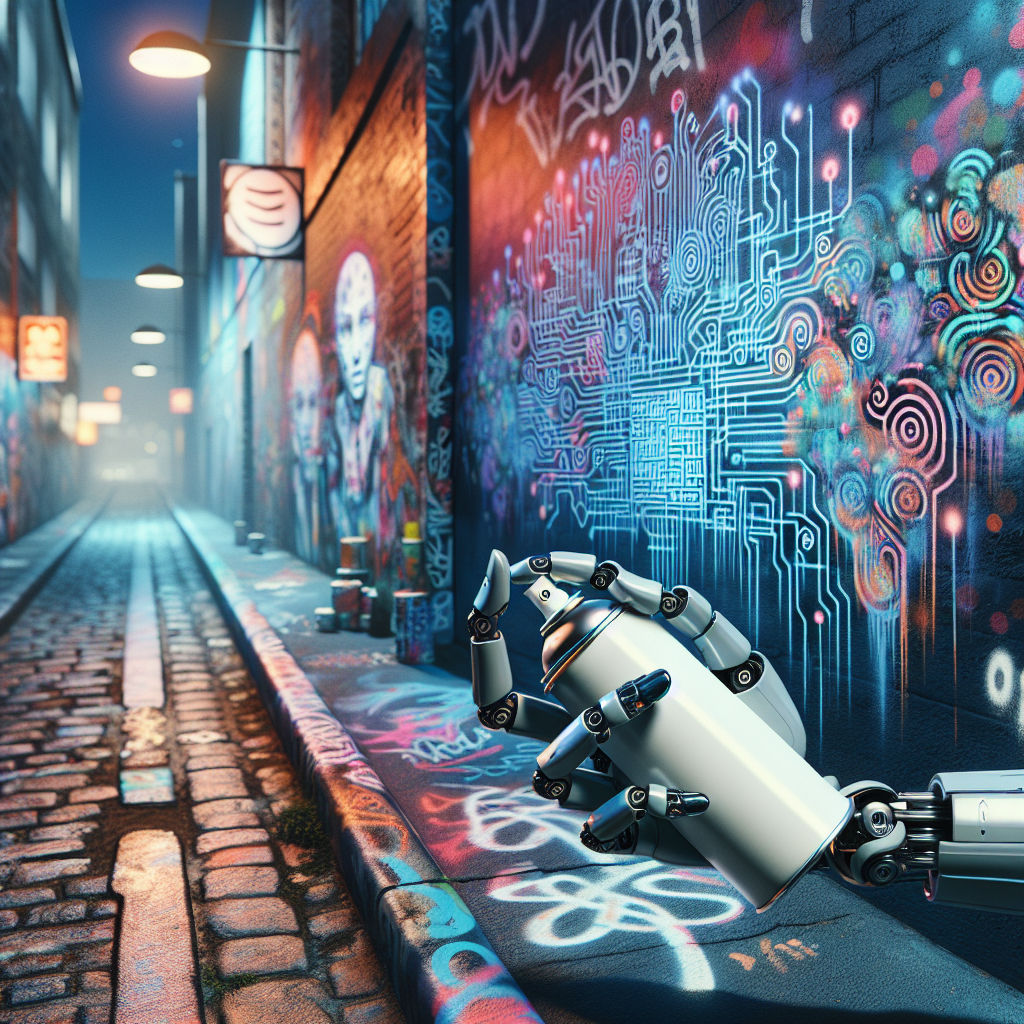AI in Street Art: Exploring the Intersection of Technology and Graffiti
In recent years, the world of street art has seen a new player enter the scene: artificial intelligence (AI). While traditional graffiti has long been a form of self-expression for artists looking to make a statement in public spaces, AI is now being used to create stunning and intricate works of art that push the boundaries of what is possible in the medium. This intersection of technology and graffiti has sparked a new wave of creativity and innovation in the street art world, leading to some truly groundbreaking pieces that blend the human touch with the power of AI.
AI in street art is a relatively new phenomenon, but it is quickly gaining traction as artists and technologists alike realize the potential of combining these two disparate worlds. By harnessing the power of machine learning algorithms and computer vision technology, artists are able to create works of art that would have been impossible to achieve using traditional methods alone. From large-scale murals to interactive installations, AI is revolutionizing the way we think about street art and pushing the boundaries of what is possible in the medium.
One of the most exciting aspects of AI in street art is the ability to create works that are constantly evolving and changing. By using algorithms that respond to environmental stimuli or input from viewers, artists are able to create pieces that are truly interactive and dynamic. This has opened up new possibilities for street art, allowing artists to engage with their audience in new and exciting ways and create works that are truly unique and innovative.
Another benefit of AI in street art is the ability to create works that are truly collaborative in nature. By using algorithms that can analyze and interpret input from multiple sources, artists are able to create pieces that are the result of a dialogue between human and machine. This has led to some truly groundbreaking collaborations between artists and AI, resulting in works that push the boundaries of what is possible in street art.
FAQs:
Q: How is AI used in street art?
A: AI is used in street art in a variety of ways, from creating large-scale murals to interactive installations. Artists use machine learning algorithms and computer vision technology to create works that would have been impossible using traditional methods alone. AI allows artists to create dynamic, evolving pieces that respond to environmental stimuli or input from viewers.
Q: What are some examples of AI in street art?
A: One example of AI in street art is the work of French artist Julien Nonnon, who creates large-scale projections using AI algorithms to create intricate and evolving pieces. Another example is the work of the Italian artist Fabio Giampietro, who uses AI to create abstract paintings that blur the line between human and machine creativity.
Q: How does AI impact the traditional street art scene?
A: AI is pushing the boundaries of what is possible in street art, allowing artists to create works that are truly unique and innovative. By using algorithms that can respond to environmental stimuli or input from viewers, artists are able to create pieces that are dynamic and interactive, engaging with their audience in new and exciting ways.
Q: What are some potential drawbacks of AI in street art?
A: One potential drawback of AI in street art is the fear that it could replace traditional methods of creation, leading to a homogenization of the art form. Additionally, there are concerns about the ethical implications of using AI in art, such as issues of copyright and ownership.
In conclusion, AI in street art is a truly exciting development that is pushing the boundaries of what is possible in the medium. By combining the power of machine learning algorithms with the creativity of human artists, we are seeing a new wave of innovative and dynamic works that are redefining the way we think about street art. As this intersection of technology and graffiti continues to evolve, we can expect to see even more groundbreaking works that challenge our notions of art and creativity.

